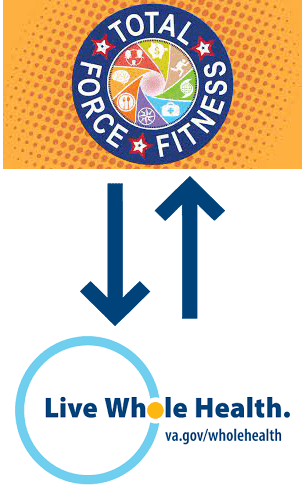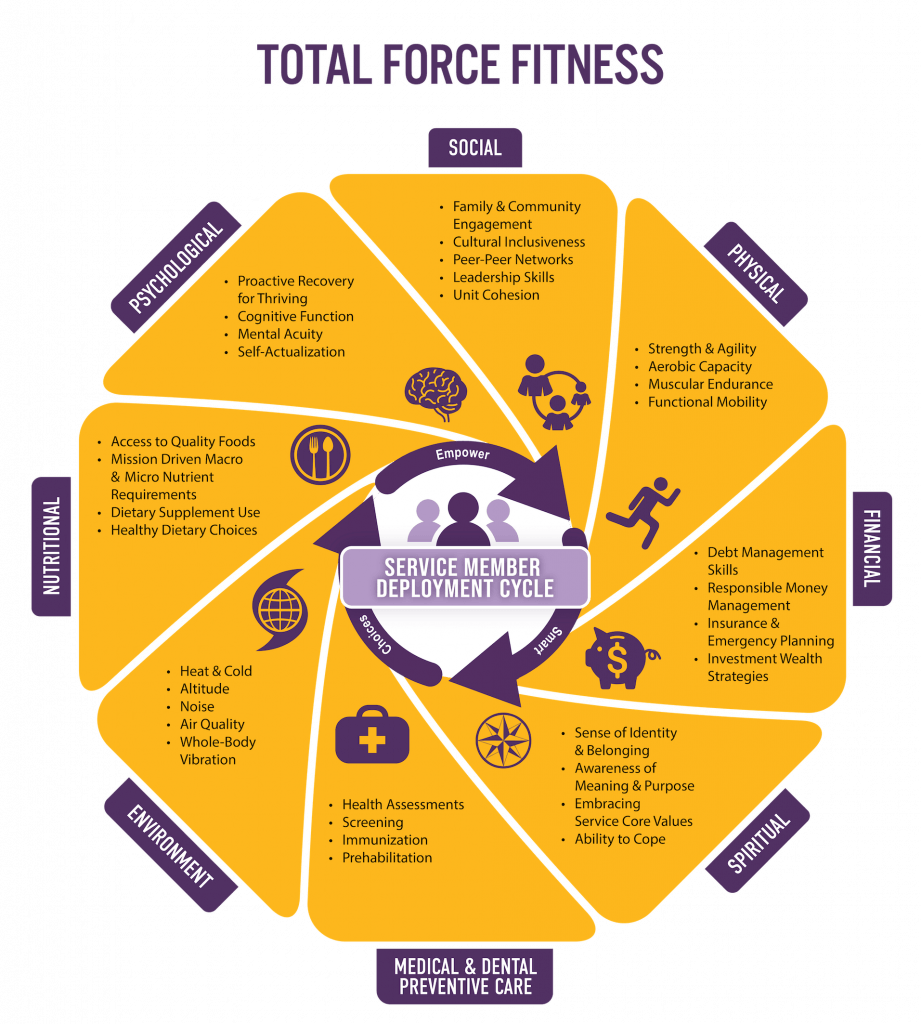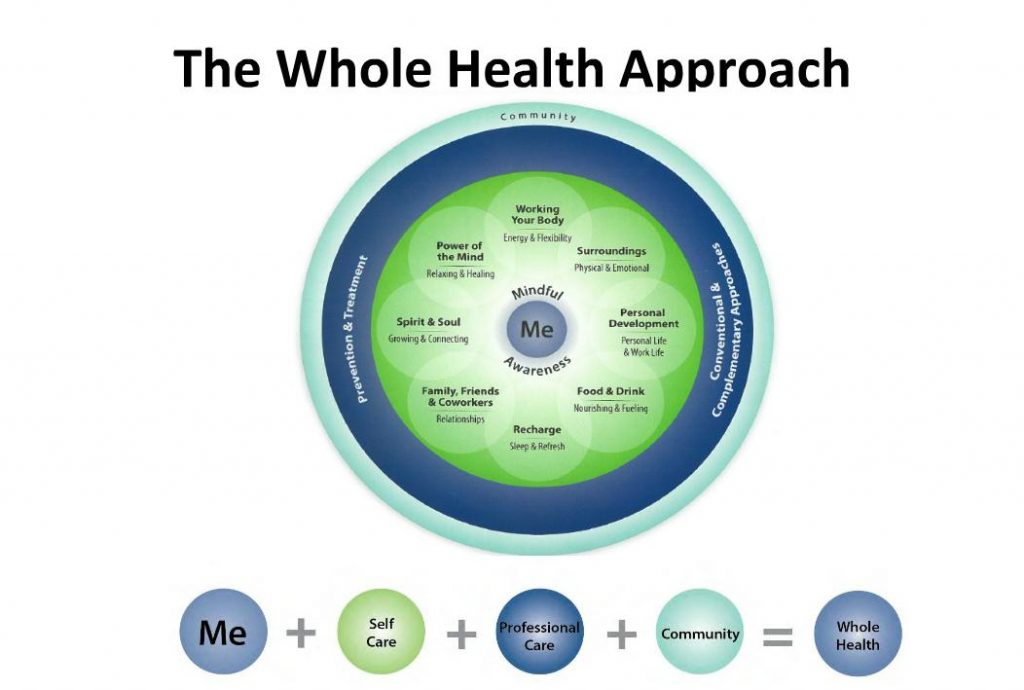 Reflecting on how the VA and DoD are working together to connect the dots for the men and women who serve our nation.
Reflecting on how the VA and DoD are working together to connect the dots for the men and women who serve our nation.
By Amy Goldstein, Director, AACIPM
I recently had the honor to participate in the Total Force Fitness (TFF) – Whole Health (WH) Summit, a two-day summit held jointly by the Department of Defense (DoD) and Department of Veterans Affairs (VA) from March 22-23 at the Uniformed Services University. The meeting was co-organized/co-facilitated by one of AACIPM’s Advisory Committee members, Eric Schoomaker, MD, PhD, FACP, Lieutenant General, US Army (Ret), and by Melissa “Missy” Givens, MD, Colonel US Army (ret), the director of the Consortium for Health and Military Performance which was instrumental in developing the DoD’s TFF concept a decade ago. The goal of this important summit was to discuss how DoD’s Total Force Fitness and VA’s Whole Health programs can align opportunities for improving the comprehensive well-being and resilience of Service Members and Veterans. Specifically, the summit focused on the pivotal transition from DoD to VA comprehensive well-being programs, including health promotion and healthcare.
The question to be answered was this: How can DoD’s TFF and VA’s WH be optimally linked for the benefit of the Transitioning Service Member (AKA, the new Veteran)? Over the course of two days, we heard from dozens of presenters representing all aspects of the DoD and VA, each describing how their program, services, and/or research related to Total Force Fitness and Whole Health. Through these individual presentations, we could see the similarities in construct and intent between the two programs–a holistic approach to well-being (e.g., physical, social, financial, spiritual, environmental, etc.).
 One of the presentations included the pain management leaders from DoD (Chester “Trip” Buckenmaier, MD, Colonel, US Army [ret] director of the Defense and Veterans Center for Intergated Pain Management or DVCIPM) and VA (Friedhelm Sandbrink, MD of the Washington DC VA Medical Center) sharing how they are actively working on connecting more dots to learn from each other’s highly collaborative work. I witnessed the lights coming on for many attendees as they listened and learned, in terms of new ideas to help promote optimal linkage with their existing programs for the benefit of the Transitioning Service Member/new Veteran. For example, the VA has exceptionally high-quality educational resources about Whole Health that could be repurposed within the DoD for the benefit of Service Members. To ensure the effort didn’t stop with the summit itself, the event included a facilitated group-think discussion that culminated with a strategic plan document to bridge the existing gaps.
One of the presentations included the pain management leaders from DoD (Chester “Trip” Buckenmaier, MD, Colonel, US Army [ret] director of the Defense and Veterans Center for Intergated Pain Management or DVCIPM) and VA (Friedhelm Sandbrink, MD of the Washington DC VA Medical Center) sharing how they are actively working on connecting more dots to learn from each other’s highly collaborative work. I witnessed the lights coming on for many attendees as they listened and learned, in terms of new ideas to help promote optimal linkage with their existing programs for the benefit of the Transitioning Service Member/new Veteran. For example, the VA has exceptionally high-quality educational resources about Whole Health that could be repurposed within the DoD for the benefit of Service Members. To ensure the effort didn’t stop with the summit itself, the event included a facilitated group-think discussion that culminated with a strategic plan document to bridge the existing gaps.
After attending, I am humbled by the efforts of leaders in the VA and DoD and feel inspired to support collaboration to benefit our Service Members and Veterans. The DoD and VA each serve approximately 9-1/2 million beneficiaries of health promotion and healthcare—nearly 20 million Americans in toto. The transition from Service Member to Veteran is often challenging, whether at the time of leaving active service, decades later, and anywhere in between. Being prepared to support our veterans requires creating an infrastructure of seamless resources and ongoing collaboration to address the many different points along the continuum of service—and of life.
AACIPM has been engaged with the VA and DoD’s efforts for some time, and has already shone a spotlight on three of their programs that are making progress toward innovative whole person, multimodal pain management:
- Leaders from DoD’s Defense and Veterans Center for Integrative Pain Management were instrumental in educating West Virginia University’s leadership who desired to evolve their health system into an integrative pain management practice.
- Early data from VA’s Whole Health initiative, including that Veterans with chronic pain who used Whole Health services had a 3-time reduction in opioid use compared to those who did not use whole health services.
- An interview with Diane Flynn, MD at Madigan’s Interdisciplinary Pain Management Center, a clinic providing both interventional care as well as a broad array non-interventional pain therapies, including physical and occupational therapy, psychology, medication management, chiropractic, acupuncture, yoga and massage.
Along with our many partners, AACIPM stands ready to continue aiding in the effort to connect the dots to expedite access to whole person, multimodal pain management. Please contact AACIPM if you have thoughts or experiences that can promote further resources for the benefit of our Service Members and Veterans.


